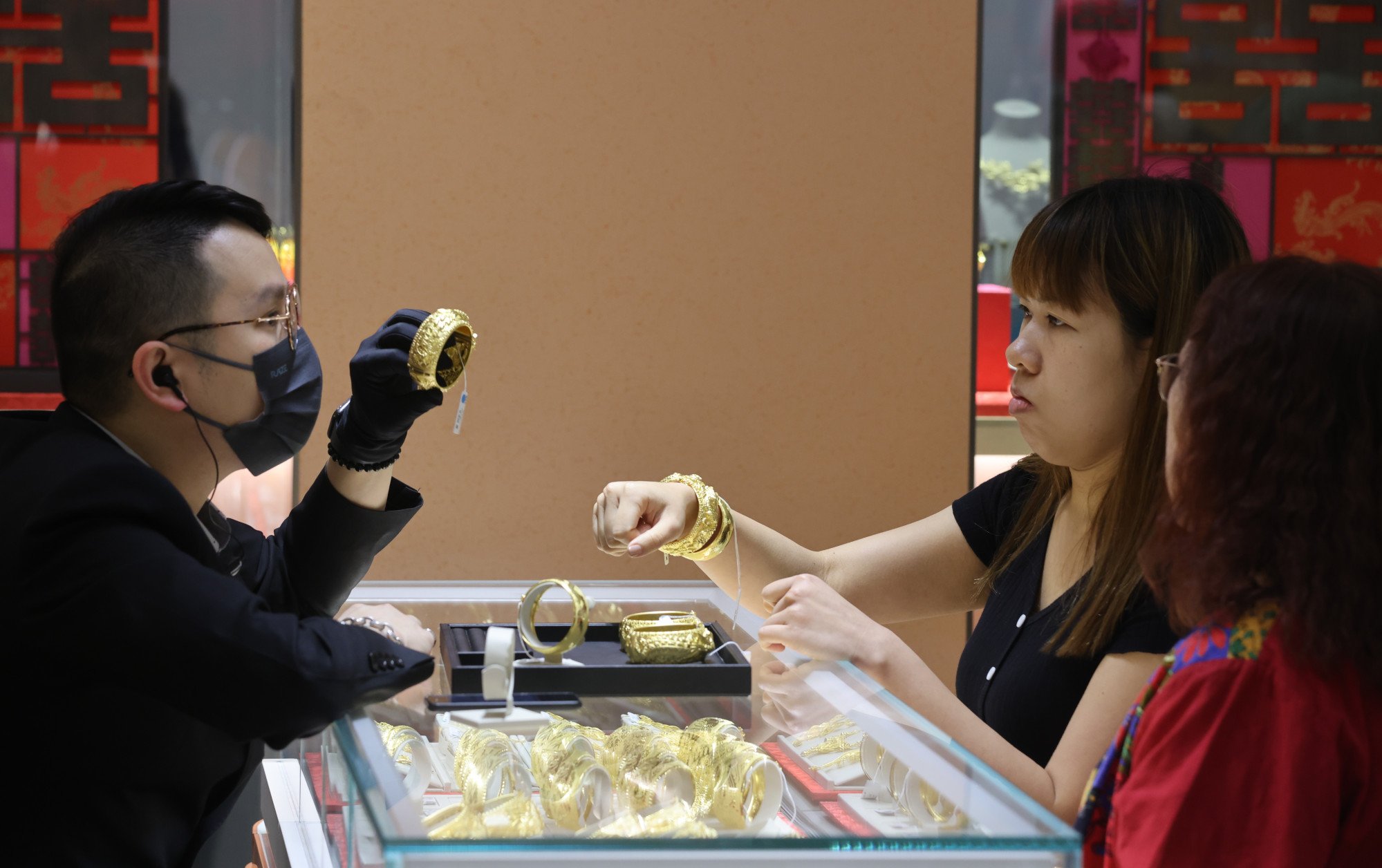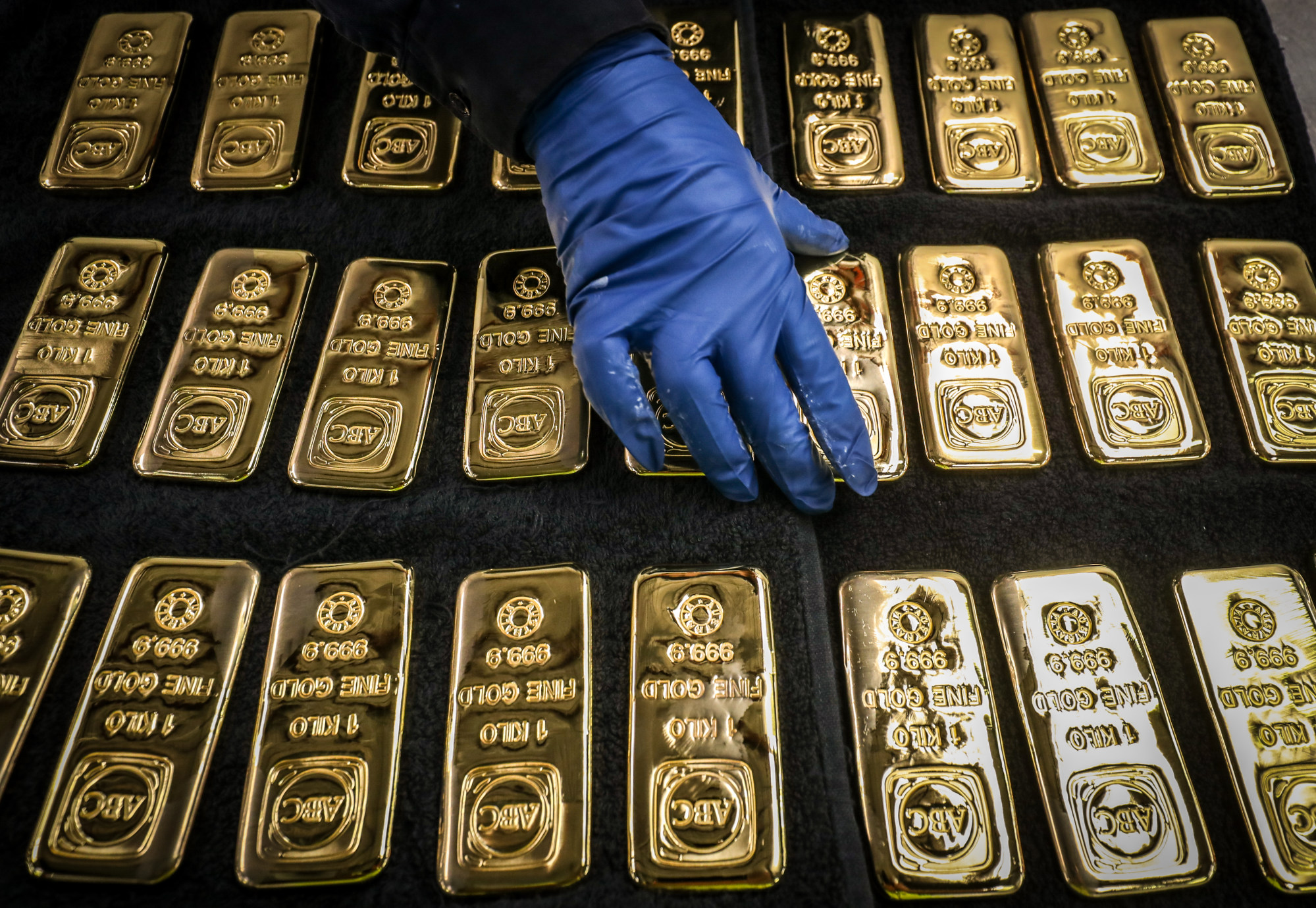Asia’s central banks snap up gold in ‘new normal’ to reduce risk from US dollar
[ad_1]
Gold’s lustre has endured timelessly for Asian buyers, and its central banks too are now following suit to snap up the commodity amid de-dollarisation – a move to reduce exposure risk to the US dollar.
Fears about their assets being vulnerable, following the US seizure of Russia’s foreign exchange reserves of US$650 billion in February last year, have triggered a buying wave by central banks, said a Sprott Asset Management report this month.
The report said it signalled a “strong desire to diversify away from the US dollar and US dollar assets”.
‘Genuinely worried’: US dollar woes fuel gold rush in Hong Kong, Singapore
‘Genuinely worried’: US dollar woes fuel gold rush in Hong Kong, Singapore
That in turn has provided a floor to gold prices, powering prices to near-historic highs of above US$2,000 per troy ounce, fuelled by expectations of interest rate cuts by the US Federal Reserve next year after a cycle of hikes over the past year and a half.
“The sanctions applied by the US administration to several sovereign entities – what some refer to as the weaponisation of the dollar – have persuaded vulnerable governments to seek reserve assets not directly at risk from exclusions,” said Ross Norman, CEO of London-based precious metals website Metals Daily.

Central bank gold purchases in July-September saw the third strongest quarter ever, the World Gold Council said, though they stood lower on the year. Year-to-date purchases up to end-October in the latest report were 14 per cent higher.
Alternative currency
“They (central banks) are responding to a variety of factors including an ongoing desire to diversify their reserve assets and a perception of higher financial risks,” said World Gold Council’s Shaokai Fan, head of Asia-Pacific (ex-China) and global head of central banks.
“However, the growing level of geopolitical uncertainty coupled with concerns over sanctions on reserve assets are undoubtedly significant drivers as well,” he said. The banks either had low gold reserves or “have large US dollar holdings, which may be prompting a stronger desire for diversification”, he added.

Since the outbreak of the Ukraine war, central banks have been buying gold at more than two-and-a-half times the prior quarterly average of the previous decade, the World Gold Council said, noting that their purchases are driven by long-term goals.
“On the whole, we expect central banks to continue buying gold in 2024 but the levels may not reach the record amounts of buying that we have witnessed recently,” Fan said.
Central bank purchases may stumble as gold prices are expected to rise as and when the Federal Reserve starts cutting rates next year. Prices could rise to US$2,400-US$2,500 per ounce by the middle of next year, said Gnanasekhar Thiagarajan, director of Commtrendz Risk Management in India.
“For sure, banks are likely to slow down when prices rise. They will wait for a price correction.” he said.
Internationally, gold prices are denominated in US dollars. Gold usually has an inverse correlation with the American currency, the value of which is likely to fall whenever the interest rates are reduced.
In the past, central banks’ buying programmes were “rather agnostic” of the price, but “these days they are more nuanced and will tend to accelerate purchases when prices are perceived to be cheap”, Norman said.
But he expects “the acquisition of gold by central banks in developing nations to continue apace. In all likelihood, we seem to have a new normal in terms of buying levels”.
Banks are increasingly paying heed to their gold reserves.
“Many central banks are realising their gold holdings are perhaps too low as a percentage of overall reserves. Somewhere between 10-20 per cent is commonly viewed as the ‘right’ balance,” said Martin Huxley, an independent commodities analyst based in the UK.
Despite derisking moves, there are likely to be limits to diversification from the US dollar.
“The US dollar can be parked in interest-bearing assets, whereas gold does not yield any returns until it is sold,” Thiagarajan said. “That is why gold will only account for a smaller percentage. The majority of reserve assets will remain in the US dollar.”
[ad_2]
Source link


.jpg?itok=EbVWo-Ha)